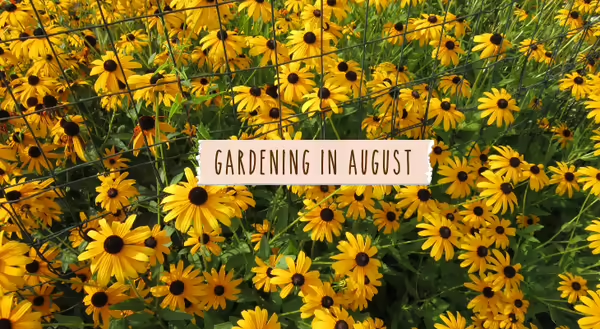
Written by Rhonda Ferree, retired horticulture educator
While walking around our yard last night my husband Mark commented that our gardens look better than ever. We usually spend August enjoying the garden instead of working in it all the time. Still there are several activities that can be done in August.
First and foremost, don't let up on mosquito control. Dump the water! Mosquitoes will grow in almost anything that holds water. Take a walk around your yard today! Dump standing water at least weekly.
Dig and divide your iris, bleeding heart, Oriental poppy, phlox, and peonies. Replant them to provide more growing room and share some with friends.
Keep deadheading your flowers for continued blooming. When the blossoms go to seed, the plants will stop producing new flowers. A plant's entire goal in life is to produce seed for new plants. Trick them into flowering more by removing dead blooms.
Believe it or not, this is the time to begin some plans for next year's garden. If you want to keep plants such as impatiens, coleus, geranium, and begonia for next year, consider taking cuttings from them to overwinter. Begin ordering spring flowering bulbs now for fall planting. You can also collect some seeds to reuse next year.
If you do not plan to grow fall crops, it may be time to do garden cleanup. If you haven't already, harvest your potatoes and onions. Cut or mow spent corn stalks, cabbage and bean plants, and other garden vegetation while it is still green. Green organic matter decomposes much quicker than dry materials. You can also compost this material. Also consider sowing a crop of rye, oats or rye grass in harvested areas for green manure or winter cover crop.
Compost weeds, garden debris and lawn clippings. Keep your compost bin well aerated, watered and the contents turned. Turning is critical if your compost bin has an odor. Recent rains have caused many compost piles to lose oxygen resulting in odors.
Continue to train grapes and thornless blackberries to the trellis or support wires. Excessive growth can be cut back or thinned out if it helps to keep the plants in bounds.
Finally, water gardens, trees, shrubs and flowers as necessary. I recommend watering trees and shrubs when rainfall is less than one inch per week. Water deeply to assure there is adequate moisture for winter survival. Be sure not to fertilize them at the same time because it will stimulate late growth that will not have time to harden off properly before winter.
Mostly, spend lots of time outdoors enjoying your garden!
MEET THE AUTHOR
As horticulture educator, Rhonda Ferree inspired citizens in local communities to grow their own food and improve their home landscapes. She focused on high quality, impactful programs that taught homeowners how to create energy-efficient landscapes using sustainable practices that increase property values and help the environment.
After 30 years with University of Illinois Extension, Rhonda retired in 2018. She continues to share her passion for horticulture related topics as “Retro Rhonda” on social media.
ABOUT THE BLOG
ILRiverHort is a blog that helps people connect to nature and grow.